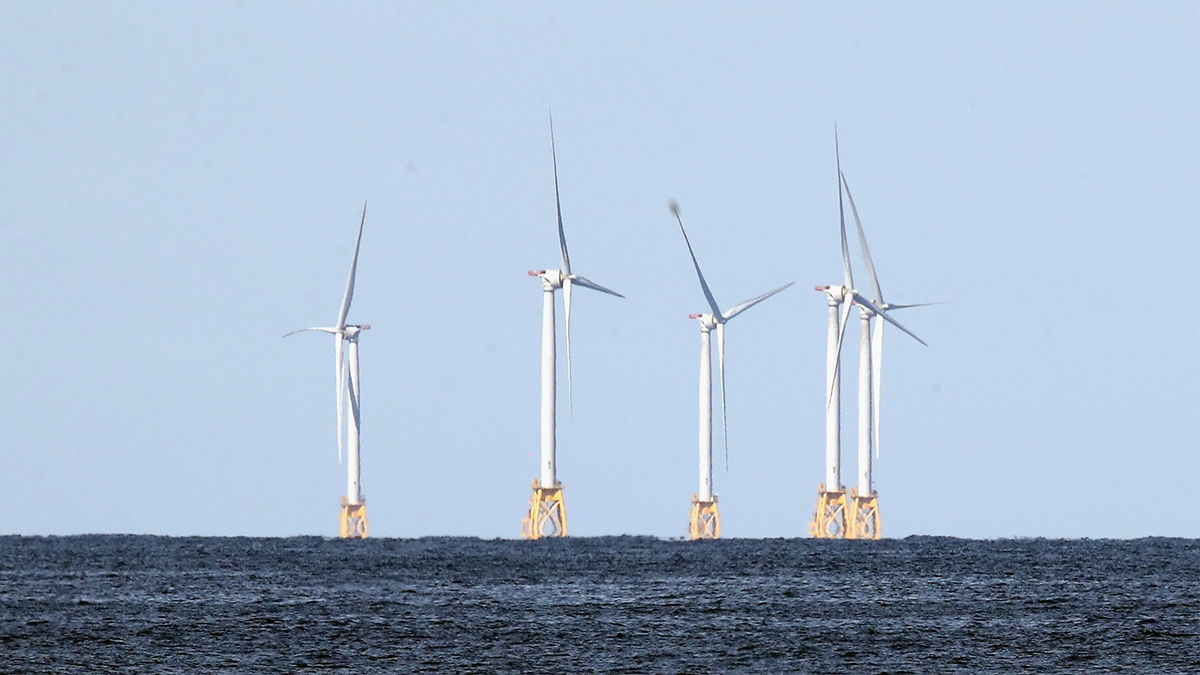More than $26 million in fees paid for by developers of New Jersey's offshore wind farms will go to the state in an agreement approved this week, and officials say the money will pay for research and monitoring of hundreds of turbines to be erected in the years ahead.
New Jersey will also soon join a multi-state organization that jointly researches the effects of the nascent offshore wind industry along the Mid-Atlantic Seaboard, according to a memorandum of understanding by the state's Board of Public Utilities.
Both agreements approved Wednesday are the newest steps in New Jersey's long path toward allowing construction of several wind farms miles off the coast, which eventually will provide 7,500 megawatts of renewable energy by 2035.
In June, the BPU approved the state's second and third wind farm projects: a 110-turbine, 1,509-megawatt wind farm by Atlantic Shores, which is owned by European power companies Shell New Energies US and EDF Renewables North America, and a 82-turbine, 1,148-megawatt farm by Ørsted called Ocean Wind 2.
Get top local stories in Philly delivered to you every morning. Sign up for NBC Philadelphia's News Headlines newsletter.
Those two farms will create enough electricity to power 1.1 million of the state's households, roughly a third of all homes in the state.
Rising Heights of Offshore Wind Turbines
Wind turbines in the ocean are much bigger than the on-land versions that dominate the landscape in places like the American Midwest. Here is how the largest turbine on the market, General Electric's 12MW Haliede X, compares in size to some well-known structures.

Credit: Nelson Hsu/NBC
Atlantic Shores' farm will be located about 10.5 miles off the coast of shore towns north of Atlantic City. Ørsted's Ocean Wind 2 will be nearly 14 miles off Cape May.
Those farms add to the first project approved in 2019 called Ocean Wind 1, and also to built by Ørsted. That farm will provide 1,100 megawatts. New Jersey has signed off on the second-most offshore wind power of any state, behind only New York.
Other states from North Carolina to Massachusetts are also weighing offshore projects that would power tens of millions of homes. Up to 17 projects currently proposed or in consideration off the East Coast call for more than 1,500 of the Eiffel Tower-sized turbines. That number is expected to grow substantially amid a push by the Biden administration for renewable energy.
A BPU spokesman could not confirm whether a $10,000-per-megawatt fee has also been agreed to with Ørsted for Ocean Wind 1. If so, that would mean a total of $37 million in funding for what BPU officials described this week as a "research and monitoring initiative."
Offshore Wind Farms: The Lease Areas and Developers
Seventeen federally leased areas are off the coasts of eight U.S. states. Click on each lease site to see how many turbines are expected or estimated, to which developer they belong and how much power will be generated. Turbine totals are either based on developers’ proposals or estimated using power generated by the largest turbine currently on the market.
Data: Bureau of Ocean Energy Management
Nina Lin / NBC
"The RMI will further the scientific understanding of the impacts from the offshore wind farms, both beneficial and detrimental, on existing natural resources and ecosystems through all phases of offshore wind farm development," BPU new technology director Jim Ferris said at the board meeting Wednesday.
The New Jersey Department of Environmental Protection will receive the money from the developers, according to the BPU. DEP officials have not yet responded to a request for information on how the money would be spent.
Officials with Ørsted and Atlantic Shores did not immediately respond to requests for comment on the fees.
The approval to have New Jersey join the National Offshore Wind Research and Development Consortium will align the state with several others as well as the U.S. Department of Energy already in the umbrella organization.
The consortium is "nationally focused" with the goal of reducing the cost of energy produced by offshore wind in the United States "while maximizing other economic and social benefits."
The organization was initially funded with $20 million from the federal government and $20 million from the state of New York. Other states that have joined, which include Virginia, Massachusetts and Maryland, have since contributed funding.
New Jersey will contribute $1 million to the consortium, Ferris told the BPU at the meeting Wednesday.
"We as a board, supporting research and development in this area, can all see the benefits in that," BPU Commissioner Dianne Solomon said following approval of the state joining the consortium.
Ocean Wind 1 is expected to get final federal approval by mid-2023, with electricity generation beginning later that year or early 2024. Ocean Wind 2 and Atlantic Shores's initial 1,509-megawatt farm will likely follow in the next few years after that. New Jersey expects to approve three additional wind farms over the next few years, with approval and construction of those in the next decade.
President Joe Biden has made offshore wind a centerpiece of his administration's push to replace fossil fuel-based energy consumption with 110 gigawatts of renewable energy by 2050.
There are lingering concerns and potential lawsuits from fishing interests that say thousands of turbines off the country's Atlantic Ocean coast could cause irreparable damage to fisheries and ocean-based industries. Some shore residents also disapprove for the huge turbines.



